Ancient Mystery Of The Tomb Of Tiryns – Burial Place For An Unknown Mycenaean Hero?
Jan Bartek - AncientPages.com - There is an interesting ancient mystery on the west slope of Profitis Ilias Hill on the Cyclades Islands in Greece. At the site, you'll find a beautiful small chapel dedicated to Profitis Ilias (Prophet Ilias) and a curious ancient tomb built for an unknown Mycenaean hero.
As the name suggests, the sacred islands are associated with the mysterious Cycladic culture. This Bronze Age culture is famous for its prehistoric Cycladic figurines carved in marble. These magnificent very ancient artifacts appeared in the Cycladic society many centuries before the arising of the famous Minoan Civilization.
Cyclopean masonry at Tiryns walls, Greece. Credit: Nick Stenning - Flickr
In 1913, archaeologists excavating in the area around the citadel of Tiryns on Profitis Ilias Hill came across a beehive structure. Later investigations revealed it was a tholos tomb.
“Strange ancient domed structures, commonly called “beehive tombs”, also known as Tholos tombs, have been found in many places around the world. What is odd about these ancient structures is that they are referred to as tombs, and yet no burial remains have been found inside them.
The most impressive beehive structure is perhaps the tomb or treasury of Atreus, sometimes called the Tomb of Clytemnestra in Mycenae Greece.” 1
When scientists examined the ancient tomb of Tiryns, they knew they had stumbled upon something interesting but difficult to solve. The 13 m long and almost 3 m wide tomb was in excellent condition, but it was empty. The entrance portal of the tomb was decorated with wall paintings of spirals, and no sarcophagus was inside. Scientists searched for ancient artifacts that could reveal why this tomb was built and for whom, but no Mycenaean pottery at all was found inside the tomb.
How can we explain the absence of a sarcophagus and burial artifacts?
Did you know? The Minoans appeared to have possessed remarkable technologies; one of them was the creation of tiny, wonderful seals, which were skillfully carved out of soft stones, ivory, or bone. Here you see finds from the Ideon Cave. Left: A piece of gold jewelry - Right: Ivory seals. Image via Explore Crete - Read more
One possible explanation is that something was placed inside the tomb, but the burial place was looted in Roman times. Another possibility is the tholos tomb was never used at all.
“Its construction is contemporary with the third building phase of the citadel. As Protocorinthian and black-figure sherds found in the cist and in the dromos confirm, the tomb must have been open already in that period. The kind of finds suggests a hero cult. In the Roman imperial period, the interior was converted into an oil-pressing installation.” 2
Masonry tunnel was found at the site. Credit: Alun Salt - Flickr
In 1915, archaeologists discovered several ancient tombs not far from the Mycenaean citadel Profitis Ilias Hill. It was rather obvious the ancient tombs were part of a cemetery where the Mycenaean civilization buried their dead. Still, most of the tombs were empty and had been looted in antiquity. However, despite the lack of grave goods and burial bodies, scientists did make a great archaeological discovery at the site. They found a beautiful gold ring from the so-called 'Tiryns treasure.' It was the largest Mycenaean signet ring yet found and a masterpiece of the Mycenaean seal engraver's art.
Gold signet ring from the "Tiryns treasure" of Mycenae. Dated to the 15th century B.C. Image source
“The bezel is deeply engraved with an important ritual scene, while the annulus is decorated in relief. In the ritual scene, a female deity sits on a throne on the far left resting her feet on a footstool. She wears a long clerical garment and cylindrical hat and raises a conical cup or rhyton with her right hand. Four lion-headed daemons carrying libation ewers walk in procession towards the goddess. Various other elements, such as a bird (possibly an eagle), an incense burner atop a short column, and the sun and moon, emphasize this scene's religious character.” 3
We will never know who was meant to be put to eternal rest in the tomb of Tiryns, but the burial place was most likely built for a cult Mycenaean hero who lived sometime between 1300 and 1400 B.C.
Updated on January 4, 2023
Written by Jan Bartek – AncientPages.com Staff Writer
Copyright © AncientPages.com All rights reserved. This material may not be published, broadcast, rewritten or redistributed in whole or part without the express written permission of AncientPages.com
Expand for referencesMore From Ancient Pages
-
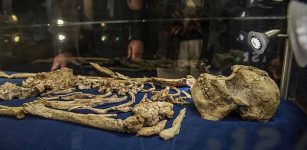 ‘Little Foot’ Is An Entirely New Species Of Early Human – Researchers Say
Archaeology | Jan 3, 2019
‘Little Foot’ Is An Entirely New Species Of Early Human – Researchers Say
Archaeology | Jan 3, 2019 -
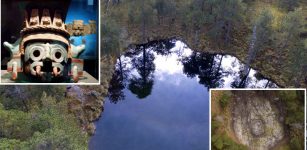 Tetzacualco – Mesoamerican Mini Model Of The Universe Discovered Underwater
Archaeology | Jan 4, 2018
Tetzacualco – Mesoamerican Mini Model Of The Universe Discovered Underwater
Archaeology | Jan 4, 2018 -
 Bizarre Sound Of A Crash Remains An Unexplained Mystery
Featured Stories | Oct 22, 2020
Bizarre Sound Of A Crash Remains An Unexplained Mystery
Featured Stories | Oct 22, 2020 -
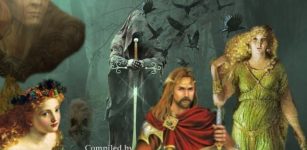 Elusive Celtic Otherworld Where Tuatha Dé Danann Reside And Time Passes Slower
Celtic Mythology | Apr 7, 2018
Elusive Celtic Otherworld Where Tuatha Dé Danann Reside And Time Passes Slower
Celtic Mythology | Apr 7, 2018 -
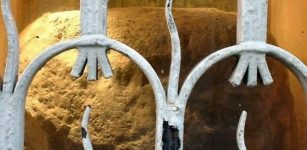 Legendary And Mysterious Stone Of Brutus – The London Stone Refuses To Give Up Its Secrets
Artifacts | Jan 21, 2022
Legendary And Mysterious Stone Of Brutus – The London Stone Refuses To Give Up Its Secrets
Artifacts | Jan 21, 2022 -
 Palnatoke – Founder Of The Jomsvikings Brotherhood, Legendary Danish Hero And Enemy Of King Harald Bluetooth
Historical Figures | Nov 2, 2016
Palnatoke – Founder Of The Jomsvikings Brotherhood, Legendary Danish Hero And Enemy Of King Harald Bluetooth
Historical Figures | Nov 2, 2016 -
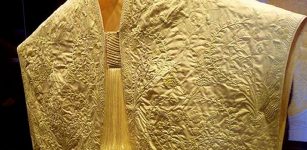 Magnificent Golden Silk Cloth Made By 1 Million Spiders Is One Of The World’s Rarest Silk Textiles
Artifacts | May 20, 2021
Magnificent Golden Silk Cloth Made By 1 Million Spiders Is One Of The World’s Rarest Silk Textiles
Artifacts | May 20, 2021 -
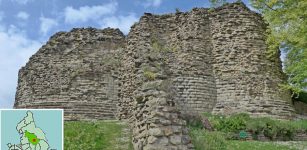 Ancient Town Pontefract, England Reveals Some Of Its Secrets
Archaeology | Mar 28, 2017
Ancient Town Pontefract, England Reveals Some Of Its Secrets
Archaeology | Mar 28, 2017 -
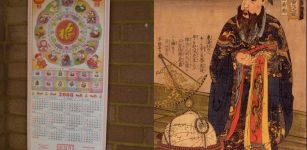 Ancient Chinese Tai Chu Calendar Was Defined By Emperor Han Wu
Ancient History Facts | Jun 3, 2019
Ancient Chinese Tai Chu Calendar Was Defined By Emperor Han Wu
Ancient History Facts | Jun 3, 2019 -
 Arsinoe II Rose To Power Through Manipulations, Murder, Conspiracies And Became Worshiped As A Goddess
Featured Stories | Apr 26, 2019
Arsinoe II Rose To Power Through Manipulations, Murder, Conspiracies And Became Worshiped As A Goddess
Featured Stories | Apr 26, 2019 -
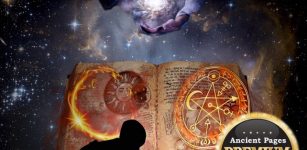 Your Destiny Is Engraved And Stored – Guardians Of The Great Mystery – Part 2
Featured Stories | Jul 11, 2018
Your Destiny Is Engraved And Stored – Guardians Of The Great Mystery – Part 2
Featured Stories | Jul 11, 2018 -
 Does This Cathedral Offer Evidence Our Calendar Is ‘Missing’ 297 Years?
Featured Stories | May 6, 2022
Does This Cathedral Offer Evidence Our Calendar Is ‘Missing’ 297 Years?
Featured Stories | May 6, 2022 -
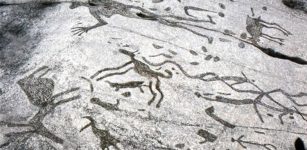 Peterborough Petroglyphs Could Offer Evidence Ancient Celts Visited Canada 2,000 Years Ago
Archaeology | May 27, 2015
Peterborough Petroglyphs Could Offer Evidence Ancient Celts Visited Canada 2,000 Years Ago
Archaeology | May 27, 2015 -
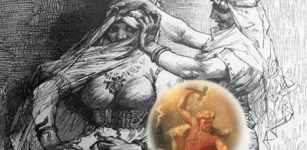 Hammer Of Thor – Great Loss Of Treasure That Protected Aesir Gods And Asgard
Featured Stories | Mar 14, 2018
Hammer Of Thor – Great Loss Of Treasure That Protected Aesir Gods And Asgard
Featured Stories | Mar 14, 2018 -
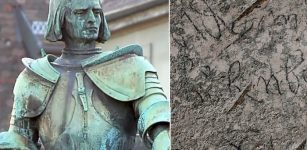 A Graffiti Inscription With The Name Of Knight Adrian von Bubenberg – Found On Mount Zion In Jerusalem
Archaeology | Nov 30, 2022
A Graffiti Inscription With The Name Of Knight Adrian von Bubenberg – Found On Mount Zion In Jerusalem
Archaeology | Nov 30, 2022 -
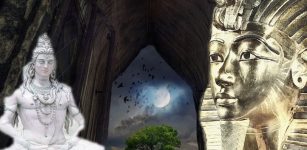 Axis Mundi That Symbolizes Separation Of The Earth From The Heaven
Featured Stories | Jul 2, 2018
Axis Mundi That Symbolizes Separation Of The Earth From The Heaven
Featured Stories | Jul 2, 2018 -
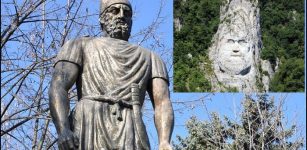 Decebalus – The Brave One’ – Last Mighty King Of Dacian People
Featured Stories | Jun 23, 2022
Decebalus – The Brave One’ – Last Mighty King Of Dacian People
Featured Stories | Jun 23, 2022 -
 Oil Lamps, Spearheads And Skulls: Was The Te’omim Cave Used By Practitioners Of Necromancy?
Archaeology | Jul 15, 2023
Oil Lamps, Spearheads And Skulls: Was The Te’omim Cave Used By Practitioners Of Necromancy?
Archaeology | Jul 15, 2023 -
 Jules Verne: A Man Ahead Of His Time Who Predicted The Future
Featured Stories | Jul 13, 2018
Jules Verne: A Man Ahead Of His Time Who Predicted The Future
Featured Stories | Jul 13, 2018 -
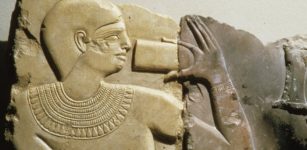 Mentuhotep II – The 11th Dynasty’s Pharaoh Who Reunited Egypt And Established The Middle Kingdom
Featured Stories | Oct 27, 2021
Mentuhotep II – The 11th Dynasty’s Pharaoh Who Reunited Egypt And Established The Middle Kingdom
Featured Stories | Oct 27, 2021





